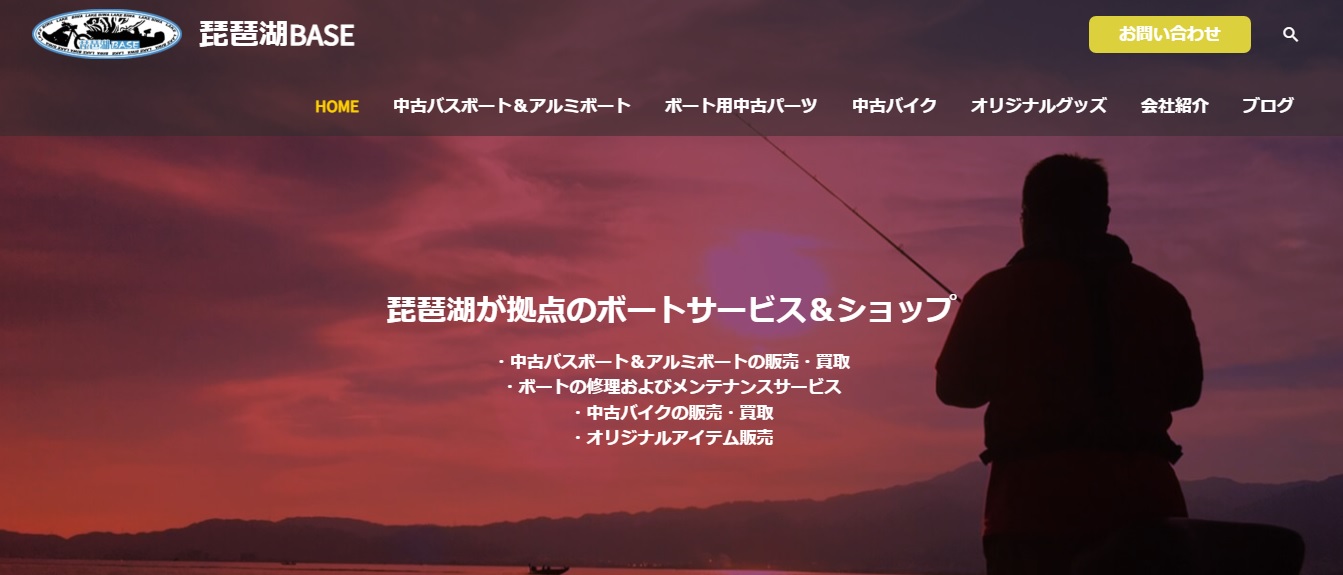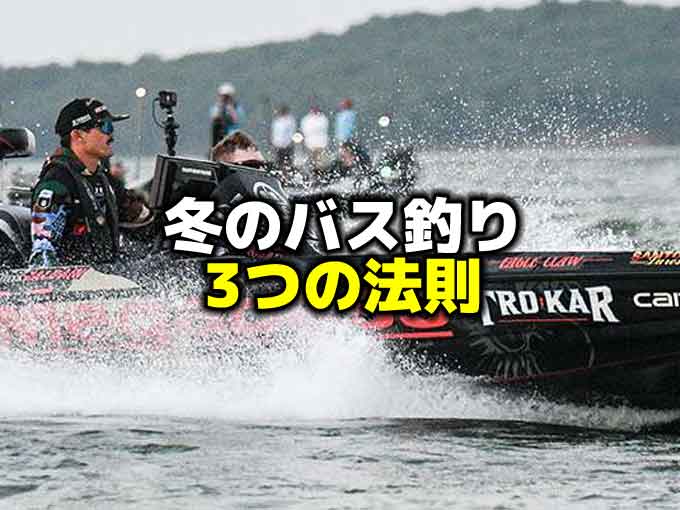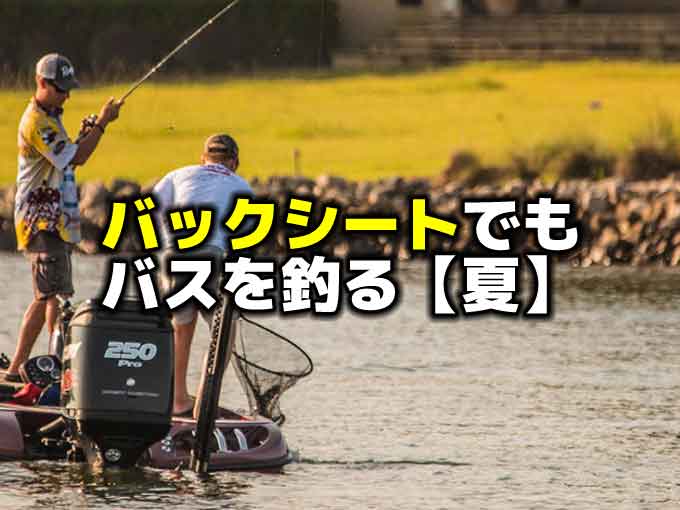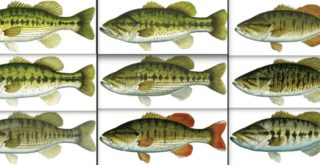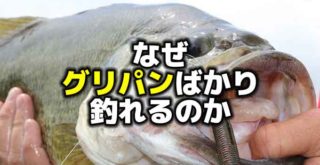ナイロンラインをバス釣りで使うべき10の理由を分かりやすく解説
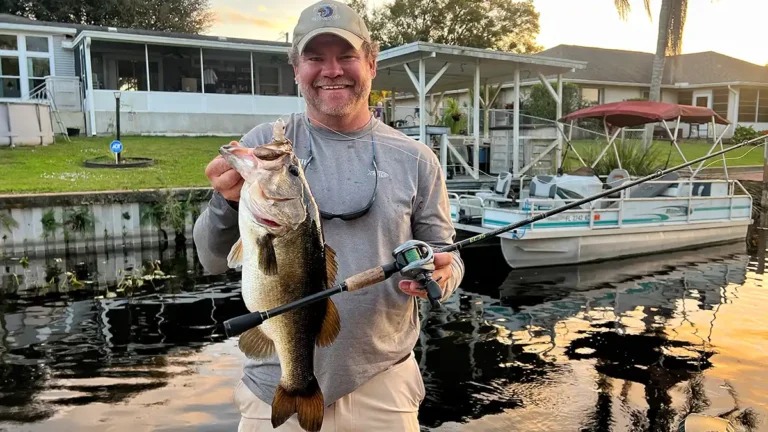
この記事は、ナイロンラインが初心者にとって適している理由と、上級者でもナイロンを使うメリットがあることを解説しています。ナイロンラインが持つ「使いやすさ」と「浮力」という性質には、「初心者への優しさ」と「上級者へのアジャスト性」というメリットがあることを学びましょう。
こんにちは!店長の小山です!
あなたは、バス釣りでナイロンラインを使われていますでしょうか。
ナイロンラインは最近の釣具屋さんに置いてある商品の割り合い的に見ると、新製品もあまり出ないですし、売り場も狭くなってしまった、時代遅れのラインと言ってもいいかもしれません。
現在ではPEライン、フロロカーボンライン、ポリエステルラインの売り場がどんどん拡大していますよね。
もちろん、新しい素材や用途で開発されたものは今までより良いものですから、より釣果に繋げるためのもの、お客さんに喜んでもらうためのものという意味では、新しいものが積極的に開発されることは良いことです。
しかしこれは「ナイロンラインがもうオワコン」という意味ではありません。
逆に言えば、ナイロンラインはこれまでの歴史の中でもう開発の余地がほとんどない、すでに完成されているラインといってもいいと思います。(実際はナイロンラインをもっともっとより良くしようと研究開発されているメーカーさんがほとんどですが)
ですので、どんどん細分化される現代の釣り業界で、時代の流れ的にナイロンラインの出番が減ってしまったのは間違いないのですが、「使えない」ラインだと言ってしまうのは大きな間違いだと個人的には思います。
特に、(自称)釣りの上手な方から「ナイロンラインは初心者専用のラインだ」みたいな声が聞こえると、本当にがっかりします(個人の意見です)。
バス釣りでは、誰にとってもナイロンラインが有効になる場面はもちろんあります。
この記事は、アメリカのバス釣り専門メディア「wired 2 fish」の記事で、ライターのシェイ・ベイカー氏が、バス釣りでのナイロンラインの効果的な使い道について解説してくれています。
最後まで読んで、ナイロンラインの良さについて、ぜひ知ってください。
BEGINNER FORGIVENESS
One benefit to monofilament that we mentioned at the onset is that this line is the best choice for beginners. Fishing is all about maximizing your odds of catching a fish. Mono is softer, cheaper and more forgiving than braid and fluoro, thus better for beginners. Nevermind the naysayers who think they know better. We’ve caught plenty of big bass on monofilament. And when we were learning to fish with baitcasters, mono was a lot cheaper to replace if we dogged up a spool.Having the self-awareness and humility as an angler to take advantage of the benefits of mono, instead of jumping straight to braid or fluoro, will keep you from blowing lots of money and spending half your time on the water picking out backlashes. There will be a time to incorporate the other line types in the future, but embracing mono early on will keep your head and heart in the game and prevent burnout before you can even really get into bass fishing.
BACKING
When you do start to use more braided and fluorocarbon lines, you’ll see pretty quickly that it costs a lot to spool up just a few reels. And what’s worse, if you spool the whole reel with braid or fluoro, much of this expensive line will never see the light of day. You simply can’t cast all the line off of a modern baitcasting reel.Using cheaper monofilament as backing on a baitcasting reel is a great way to cut down on the cost of spooling up. Fifteen- to 20- pound test mono is a good size range to use for backing. Tie the mono to the spool of the reel, fill it about one-third to halfway and then tie a line-to-line connector knot to your braid or fluoro and finish spooling the reel up.
CAROLINA RIG LEADER
Monofilament floats, where fluorocarbon sinks. This is one of the key differences between these two line types and something that you can use to make your Carolina rig more effective. A Carolina rig consists of a mainline that holds a weight and bead retained by a swivel, along with a leader line that has one end tied to the swivel and the other tied to a hook rigged with a weightless soft plastic bait.The idea is for the bait to wash around in the little cloud of mud and silt generated by the weight, as the whole rig is drug along the bottom. With a fluorocarbon leader and a traditional soft plastic, the bait drags right along the bottom. But using a monofilament leader, the bait is allowed to float up a little. Using a super buoyant soft plastic or material like those found in the Z-Man ElaZtech lineup is a great way to even further pull the bait up off the bottom.
CLOSE-QUARTER TOPWATER
As we just stated, monofilament line floats. And so does braid. This makes these two line types better suited for topwater fishing than the sinking fluorocarbon. But which line is best for topwaters? Well, braid’s lack of stretch and long-range castability makes it the premiere choice for most topwater applications, allowing you to throw baits farther and set the hook better on the ends of those long casts.However, there are a select few topwater situations when using monofilament actually increases your odds. Let’s use fishing a finesse popper for an example. A lot of times you’re pitching it around to targets. In this situation, you usually don’t need to cast the bait far, so braid is unnecessary in that regard. And the lack of stretch in braid is actually a bad thing when it comes to setting the hook and fighting a fish on a short line with a popper, as the braid can rip the hooks free. The stretch in mono is more forgiving and helps keep the fish from pulling off during the close-quarters fight.
WAKE BAITS
For similar reasons, wake baits typically perform better on mono than braid. Again, both of these lines float. But the braid is more noticeable in the clear water that you’d usually find yourself fishing a wake bait in. And wake baits almost always use treble hooks— the smaller baits naturally paired with smaller trebles.Thus mono is better suited for use with most of these baits on the surface, or just below. However, you will want to move to braid when fishing large wake baits, like wooden rats for example. But 12- to 20-pound mono is perfect for the smaller and lighter wake baits with thin-wire trebles.
TWIN PROP LEADER
Another topwater presentation that can benefit from mono is a twin-prop bait, like a Devil’s Horse. This style of topwater is really popular in Florida and in a few other parts of the country during and right after the bass spawn. The fish in these situations are often on high alert, so long casts are essential, and thus braid is vital. Braid can also cut through the vegetation these baits are often fished around, far better than mono can.But there’s one particular drawback to braid with this type of bait— it tangles in the front prop. These baits are designed to be twitched along the surface. The props spin as the bait coasts forward after each twitch, the front prop often tangling in the limp braid as it spins. You can use a short, 6-inch mono leader though to prevent this. The stiffer (but still buoyant) mono stays out in front of the prop (while also still keeping the nose of the bait up).
SHALLOW YOUR CRANKBAITS
Again, because monofilament floats, it can be used to add buoyancy to certain presentations. This we’ve already seen with Carolina rigs. The same property of mono can be used to decrease the depth range of a crankbait as well. Often times when talking cranking, we stress the importance of fluorocarbon line. Because it sinks and has a smaller diameter, it allows for crankbaits to be fished deeper.But if you want to fish a shallow-diving squarebill in particularly skinny water for instance, higher-pound test mono can help. Sure, you could just hold your rod tip high or slow your retrieve to fish the bait closer to the water’s surface; but slowing your retrieve would change the action of the bait and holding your rod tip high would increase your odds of hanging in cover.
Using a 20-pound mono in place of a 12-pound fluoro instead could cut a foot of depth off the presentation while keeping everything else the same. This principle can also be used to decrease the diving range of mid-depth crankbaits, and allow you to fish bigger, deep-diving plugs in shallower water where they are less often seen.
FLIPPING WOOD OR VINES
In most situations, braid or fluoro will be the better selection when flipping, pitching and punching. When punching hydrilla mats for instance, braid in unbeatable. When pitching to isolated cover in clear water, fluoro reigns supreme. Plainly stated, mono can’t compete with the strength, durability and other attributes of braid and fluoro in most of these settings.However, when flipping around bushes, vines and other woody cover, there’s at least an argument to be made for using mono. Thin-diameter braid, and even fluoro, can cut into this type of cover and result in lots of fish lost during the fight. Using a heavy-pound test mono (upwards of 30) increases the diameter of the line to the point where it has a hard time digging into soft wood and tough vines, allowing you to wrestle the fish out instead of pin them to the cover.
ADDING BUOYANCY TO SUSPENDING LURES
Returning to the buoyancy of mono, you can again use this trait of the line to modify the behavior of a jerkbait. Most jerkbaits are designed to float, suspend or sink at certain temperatures. This is particularly important in the colder moths, when lethargic bass in deeper water need a little extra time to look at a bait before making up their minds to eat.But if for some reason you feel the need for your bait to suspend, or even float in the colder water that it would inherently sink in, mono can be used to make the bait do just that. The stretch of mono also helps lower the risk of losing hair-lipped bass that either short-strike or swat at baits. And mono can be used to cut down on the depth range of a jerkbait the same way that it can be used with a crankbait, if you want to fish the lure above submerged vegetation for instance.
SLOWING REACTIONS
Last but not least, mono can be used to take some of the errors out of bass fishing. Fishing is an emotional endeavor. This is actually a large part of what makes it so popular. The thrill of boating a big bass and the agony of losing one evoke emotions that are hard to compare to those of other aspects of our lives. In this way, fishing makes us feel more alive.But that excitement, or the negative emotions left by the one that got away, can produce future mishaps as well. A premature hookset has led to many a might-have-been. A bass that initially boils on a topwater may very well return seconds later to finish the job, if the bait isn’t snatched away from it by a trigger-happy fisherman. With braid, a knee-jerk, reactive hookset like this will send the bait careening back towards you before you even realize what has happened.
The stretch of mono though gives you just a split second longer to process the bite, slowing your reaction time just enough to pause mid hookset and continue to work the bait a few more seconds. In this way, mono can really increase your hookup ratio with baits bass often short-strike, like treble-hooked topwaters, burning crankbaits and even fast working jerkbaits.
Mono can make you a better bass angler, if you give this often underestimated line type some work in the right situations. Wired2fish Publisher Jason Sealock is a big proponent of monofilament in his fishing and finds it to be more manageable, affordable and forgiving for beefy gear as well as a great line for panfish, BFS gear and other situations anglers fish a lot.
As an Amazon Associate, we may earn income when you click on an Amazon link. Thanks for helping us do what we love.
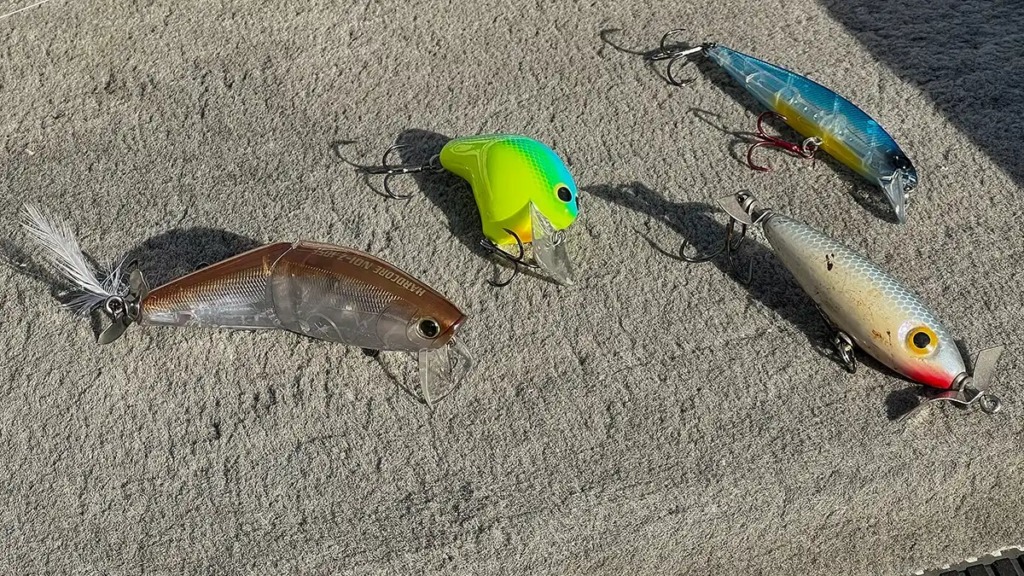
初心者に優しい
ナイロンラインのメリットの 1 つは、初心者アングラーにとって良い選択だということです。 釣りをするわけですから、魚を釣る確率を最大限に高めることが重要です。 ナイロンはPEより安く、フロロよりも柔らかいという点で、初心者に優しいと言えます。 上級者アングラーが言う反対意見には耳を貸さないでください。 ナイロンラインだってビッグバスがたくさん釣られています。 そして、ベイトリールの扱いに慣れるまでは最悪のバックラッシュもありますが、ナイロンラインならライン交換も安く済みますね。
いきなりPEやフロロに飛びつくのではなく、アングラーとしてナイロンのメリットを活かす意識を持ち、見栄を捨てれば、釣りのときのバックラッシュを直す時間や余計な出費をおさえることができるでしょう。 ゆくゆくは他のラインも使うときが来るでしょうが、早い段階ではナイロンラインに慣れることで、頭と心をやるべきことに集中させ、バス釣りに本格的に取り組む前に嫌になってしまうのを防ぐことができます。
下糸に使う
PEラインやフロロカーボンラインを使っていると、数個のリールにラインを巻いただけでかなりの出費になることにすぐに気づきます。 さらに悪いことに、スプールいっぱいにPEやフロロを巻いたとき、内側にあるラインが使われることはないのです。
値段の安いナイロンラインをベイトリールの下糸として使うことは、コスト削減の良い方法です。 15 ~ 20 ポンドのナイロンは、下糸に適した太さです。 ナイロンラインをスプールに結び、約 3 分の 1 から半分まで巻いたら、PEやフロロ結んで、最後まで巻き上げて完了です。
キャロライナリグのリーダー
ナイロンラインは浮き、フロロカーボンは沈みます。 これは、この2つのラインの重要な違いの 1 つであり、キャロライナリグをより効果的にするために使える要素です。 キャロライナリグは、メインラインに通したシンカーとビーズ玉の先にスイベルがあり、その先にはノーシンカー状態のワームが結ばれているという構成です。
このリグでは、リグ全体をボトムに沿ってズル引きしますが、シンカーによって発生する土や泥の煙のなかをワームが通ることになります。 フロロカーボンリーダーとワームの組み合わせでは、ワームはボトムべったりを引っぱられていきます。 しかし、ナイロンラインのリーダーを使うことで、ワームに少しの浮力を持たせることができます。 浮力の高い素材のワームを使うことでで、さらにふわふわとした操作が可能になります。
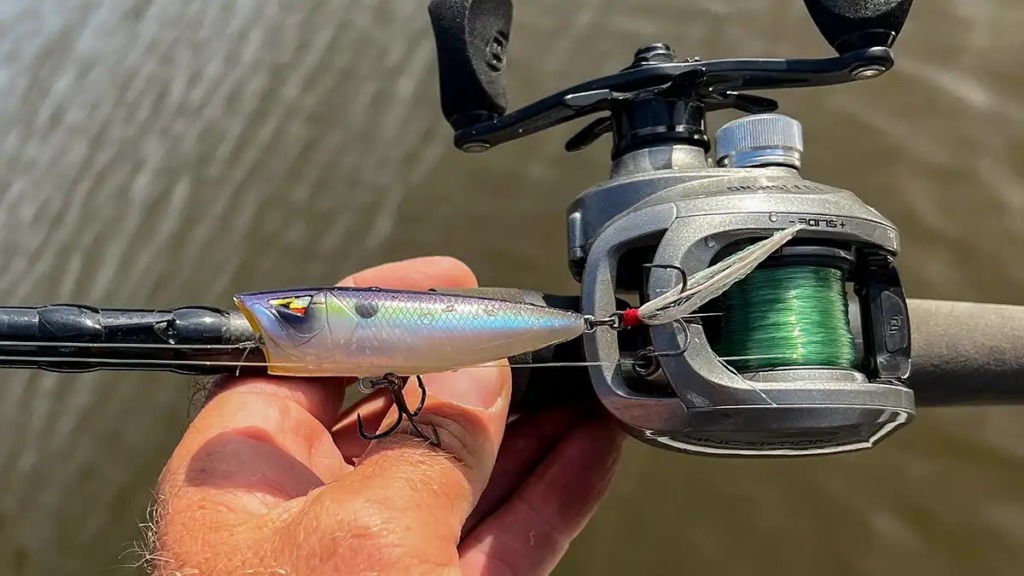
ショートキャストのトップウォーターゲーム
先ほども述べたように、ナイロンラインは浮きます。 PEラインも同様です。ですので、この2つのラインは、沈んでしまうフロロカーボンよりもトップウォーターの釣りに適しています。
では、トップウォーターにはどっちのラインが最適なのでしょうか? そうです、PEラインは伸びがなく、飛距離が出て、さらに遠くのルアーへのバイトでも確実にフッキングができるので、多くのトップウォーターの釣りに最適です。
ただし、トップにナイロンラインを使ったほうが良い状況もあります。 小さなポッパーを使う場面を例にしてみましょう。 まずターゲットに向かってキャストします。小さなポッパーを使うということは、ルアーを遠くにキャストする必要がない場面が多いはずなので、この時点でPEラインは必要ありません。
そして、PEラインに伸びがないということは、短い距離でフッキングしてからファイトしている間にフックによって身切れしてバラしてしまう可能性があるという悪影響があります。 ナイロンラインにある伸びはショックを吸収し、接近戦でのファイトで身切れを防ぎます。
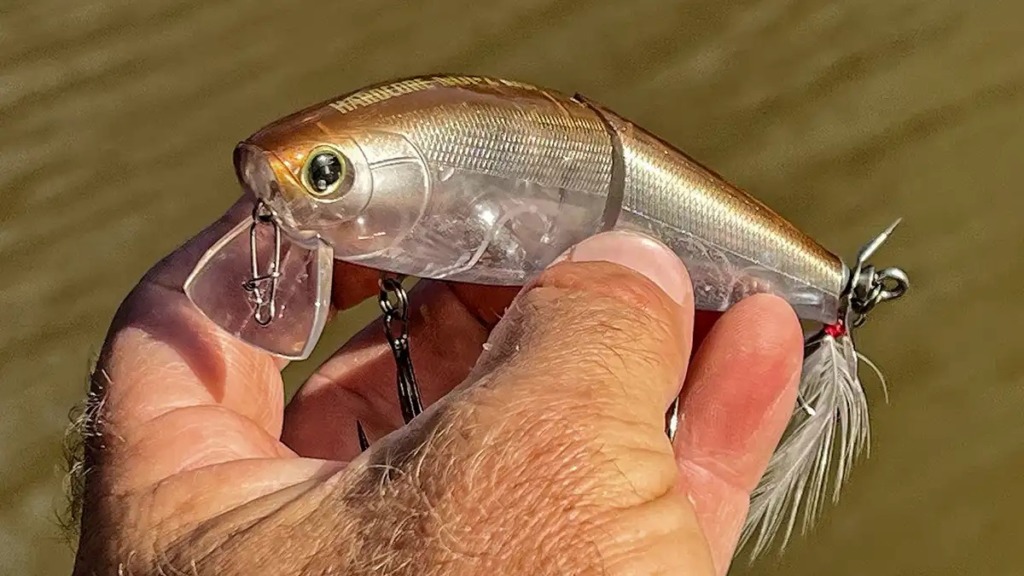
ウェイクベイト
同様の理由で、ウェイクベイトもナイロンラインの方が適していると言えます。繰り返しますが、PEとナイロンラインは両方とも浮きます。 しかし、ウェイクベイトを使うことが多いクリアウォーターでは、PEラインは目立ってしまいます。そして、ウェイクベイトにはほとんどの場合トレブルフックが付いており、小さなルアーには小さなトレブルフックが組み合わされているのが普通です。
そのため、ナイロンは水面や水面直下で使用するルアーに適しています。 ただし、大型のウェイクベイトを使う場合は、PEの方が良いでしょう。ファインワイヤーのトレブルフックが装着された小さくて軽いウェイクベイトには、 12 ~ 20 ポンドのナイロンラインが最適です。
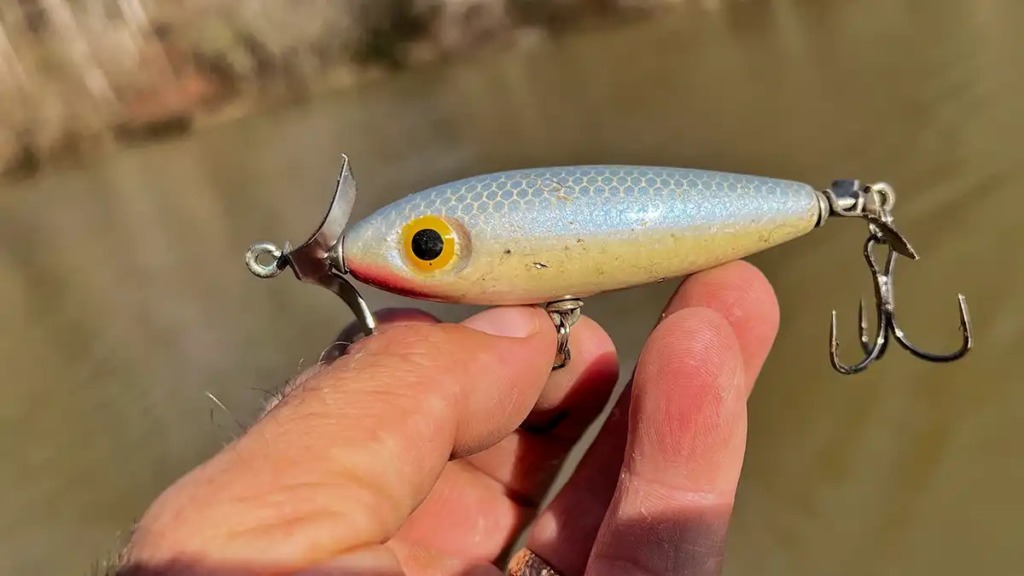
ツインプロップベイトのリーダーとして
ナイロンラインが適しているトップウォータープレゼンテーションのもうひとつは、デビルズホースなどのツインプロップベイトです。 この手のルアーは、スポーニング中およびアフタースポーンのころ、フロリダやその他の地域で非常に人気があります。
このような状況ではバスは警戒心が強いことが多いということで、ロングキャストが必須となるため、PEラインが重要となります。 PEラインは、ルアーに絡みついてくる植物を切り裂くことができるという意味でも、ナイロンよりもはるかに優れています。
しかし、ダブルプロップのルアーでPEラインを使うにはデメリットが 1 つあります。それは、フロントプロップにラインが絡まってしまうことです。 このルアーは水面でドッグウォークさせるように設計されています。
ルアーをトゥイッチするたびに前へ惰性で進むことでプロップが回転し、回転するときにフロントプロップとたるんだPEラインが絡んでしまうことがよくあります。
これを防ぐために、15センチくらいの短いナイロンリーダーを使います。 PEよりは硬く、しかも浮くナイロンは、プロップに絡まりにくく、しかもルアーの先端を沈ませないように保ってくれます。
シャロークランク
キャロライナリグのところで言ったことの繰り返しになりますが、ナイロンラインは浮くので、浮力を持たせたい釣りに効果的です。このナイロンラインの特性を使うことで、クランクベイトが潜る深さを浅くすることもできます。 クランクベイトの釣りでは、フロロカーボンラインを使うメリットのほうがよく耳にすると思います。 同じ太さでもラインが沈む分だけ、クランクベイトをより深く潜らせることができる、といったことです。
しかし、たとえば、特に水深のないフィールドでシャロースクエアビルクランクを使いたい場合は、太さのあるナイロンラインが役に立ちます。 もちろん、ロッドティップを高くしたり、リトリーブを遅くしてルアーを水面近くにキープすることもできます。 しかし、リトリーブを遅くするとルアーのアクションが変わり、ロッドティップを高くすると、フックがリップで隠れなくなってしまうため、カバーに引っ掛かる可能性が高くなります。
12ポンドのフロロラインから20ポンドのナイロンラインにすることで、まったく同じことをしても、ルアーの潜るレンジが30センチ浅くなります。 この考え方で、ミディアムクランクが潜る深さを浅くすることができ、シャローではバスがあまり見ることのない大きさの大きくて深く潜るクランクをプレゼンテーションすることができます。
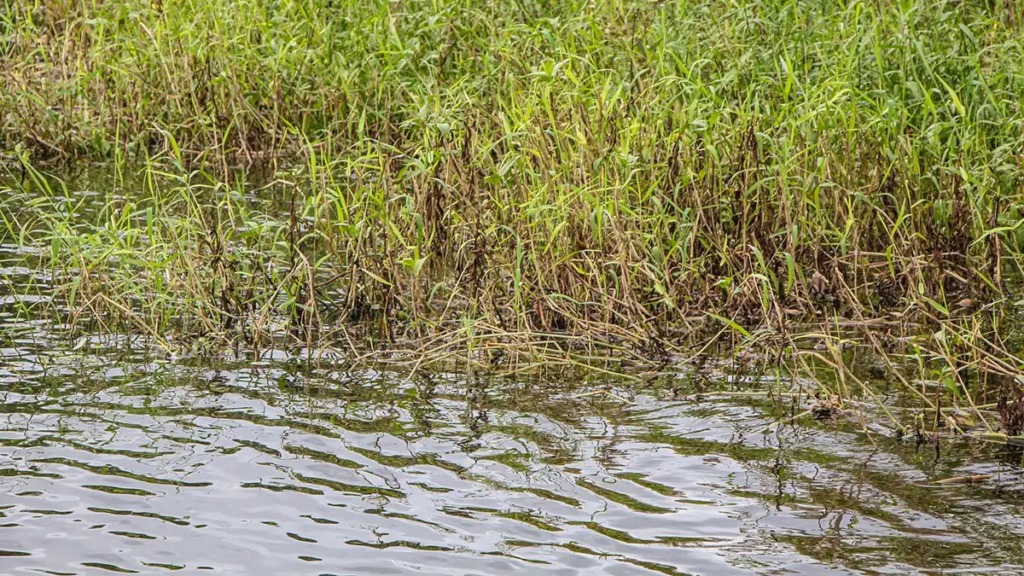
ブッシュ系カバーでのフリッピング
フリッピングやピッチング、パンチングを行う場合は、多くはPEラインかフロロラインの方が適しています。 たとえばカナダ藻ドームを撃ち抜くときなどは、PEラインなら無敵です。 クリアウォーターでの孤立したカバーにピッチングするときは、フロロが最高でしょう。 はっきり言ってナイロンラインでは、これらの状況ではPEやフロロの強度、耐久性、その他の特性には敵いません。
ただし、ブッシュその他のウッド系カバーでのフリッピングの場合なら、ナイロンラインを使う意味が少なからずあります。 直径の細いPEラインや硬いフロロだと、バスとのファイト中にカバーに食い込んでしまい、バラしてしまう可能性があります。 30ポンド以上の太いナイロンラインを使うことで、ファイト中に柔らかい木やつる草に食い込みにくくなり、バスがカバーに引っ掛かることなく抜きあげることもできます。
サスペンドルアーに浮力を加える
ナイロンラインの浮力に話を戻しましょう。この特性を利用することでジャークベイトのアクションを変えることができます。 ほとんどのジャークベイトは、特定の水温でサスペンドする(または浮くか沈む)ように設計されています。 これは寒い季節など、バスがルアーを食うか食わないか決めるのに少し時間がかかるような場面で特に重要です。
しかし、何らかの理由で、本来沈むはずの水温でルアーを浮かせたり、サスペンドさせたいと感じた場合、ナイロンラインを使用することでそれができるようになります。
また、ナイロンラインの伸びは、ショートバイトやルアーに頭から体当たりしてくるようなバスをしっかり掛けるのにも役立ちます。
さらに、クランクベイトの時と同じように、たとえば水中のウィードトップの上をルアーを通したい場合など、ジャークベイトのレンジを浅くするために使用できます。
あえての感度の悪さ
最後です。ナイロンラインを使うことで、バス釣りでの残念な一面を取り除くことができます。
バス釣りとは感情を伴う作業であり、実はこれが人気の理由の大部分を占めています。ビッグバスをボート際でファイトするスリルや、ビッグバスをバラしたときの苦しみは、私たちの生活の中でも他とは比べものにならないほど激しい感情を呼び起こします。 つまりバス釣りは、私たちに生きている実感を与えてくれます。
しかし、釣った時の興奮、またはバラしたときのネガティブな感情は、どちらも将来に不幸をもたらす可能性があります。 フッキングが早すぎることは、多くの「もしかしたら」を生み出します。
トップウォータールアーにバイトしてきたバスが乗らなくても、数秒後にまたバイトしてくるかもしれない。PEラインで素早くフッキングをしてミスすると、ルアーが手前にポーンと飛んできてしまい、これらの可能性を消してしまいます。
そんなとき、ナイロンラインなら伸びがあることで、バイトからフッキングまでの間がほんのコンマ数秒長くなり、フッキングアクションを途中でやめて、ルアーをアクションさせ続けるといったことができるくらいの時間を稼げます。
このようにナイロンラインは、トレブルフックが付いたトップウォーター、シャロークランク、ジャークベイトなど、ショートバイトの多いルアーでのフッキング率を高めることができます。
過小評価されがちなナイロンラインでも、適切な状況で工夫を加えれば、あなたはより良いバスアングラーになれるでしょう。
最初にナイロンラインは初心者専用ラインではないと言いましたが、実際には初心者に優しいラインです。
しかし、初心者に優しいラインが、上級者に優しくないということではないというのは、記事を読んでいただければお分かりになられたかと思います。
特に、ひとつにラインに慣れてきた私のようなアングラーは、たとえばPEラインを使い始めた時は、キャストの飛距離に喜びましたが、身切れの多さには泣きました(笑)
バラしたときに決まっていうセリフが「今まで通り普通にやっただけなのにバレた。PEいらないな」という感じのもの。
ラインをフロロからPEに変えたのだから、今までと同じ通りにやっていてはいけないというのは分かるはずなのに、やってしまう。
これをラインのせいにしてしまうというのが、私のように謙虚さをなくしたアングラーですからね、皆さんは気を付けてくださいね(笑)
重要なのはトラブルをラインのせいにするのではなく、ラインの特徴をよく理解して扱い、トラブルを減らすということですよね。
細分化が進んだ現代を生きるバスアングラーこそ、ナイロンラインを初心者用ラインと決めつけるのをやめ、ナイロンラインのメリットとデメリットを見直し、自分の釣りに合いそうなら採り入れてみることではないでしょうか。
それではまた!
毎度ありがとうございます!
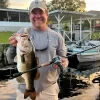
 https://www.wired2fish.com/fishing-tips/10-ways-mono-can-imp...
https://www.wired2fish.com/fishing-tips/10-ways-mono-can-imp...





